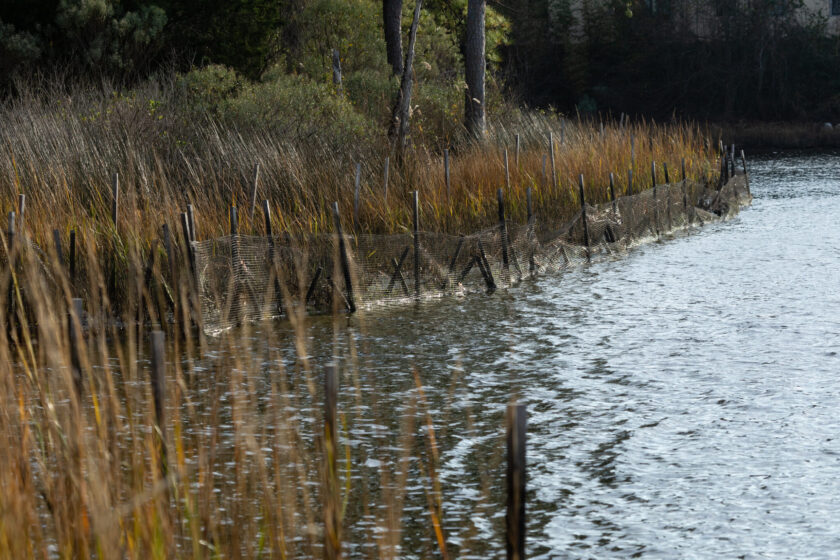Rogard Ross
Chesapeake, Virginia
When Rogard Ross moved to Chesapeake, Virginia, 10 years ago, he started searching for a new place to volunteer. Active in the environmental community, he joined the Elizabeth River Project (ERP), which improves the health of the Elizabeth River and other local waterways through education and restoration projects. When Rogard learned that ERP was interested in doing a living shorelines project, he suggested his waterfront home on the Indian River.
The shoreline behind Rogard and his neighbors’ homes is owned by the neighborhood’s condo association. The board agreed to a hybrid project that included a 550-foot living shoreline restoration and the installation of oyster castles. In June 2018, 200 volunteers constructed 800 oyster castles and planted 5,000 native Spartina alterniflora and Spartina patens marsh plants.
Rogard worked mainly with ERP to complete the project. The organization took care of permits, raised funding, brought in materials and recruited volunteers. While the condo association paid a small share of the total cost, most of the project was funded through a National Fish and Wildlife Foundation grant called “Restoring the ‘Lost Branch’ of the Elizabeth River.” Other partners in the restoration included Friends of the Indian River, which was founded by Rogard, the Chesapeake Bay Foundation, whose oyster restoration program brought in 85 bushels of oyster shell, and a crew from the U.S. Navy to help put the shell down.
“Besides providing more habitat and cleaning the water with the oysters, [the restoration] also provides erosion protection.”
- Rogard Ross
In the 10 years that Rogard has lived on the river, he has noticed the water gradually getting clearer. Since the restoration project, he has noticed spat and barnacles on the oyster castles, blue crabs and fish. An avid bird-watcher and kayaker, Rogard has observed about 70 different species of birds and mammals on his property, including pelicans, ospreys, eagles, buffleheads, herons, gray foxes and many more.
Rogard feels that the community is now better prepared for the effects of weather and climate as well. The marsh provides a strong buffer against storms and sea level rise, helping to protect property from erosion and flooding.


